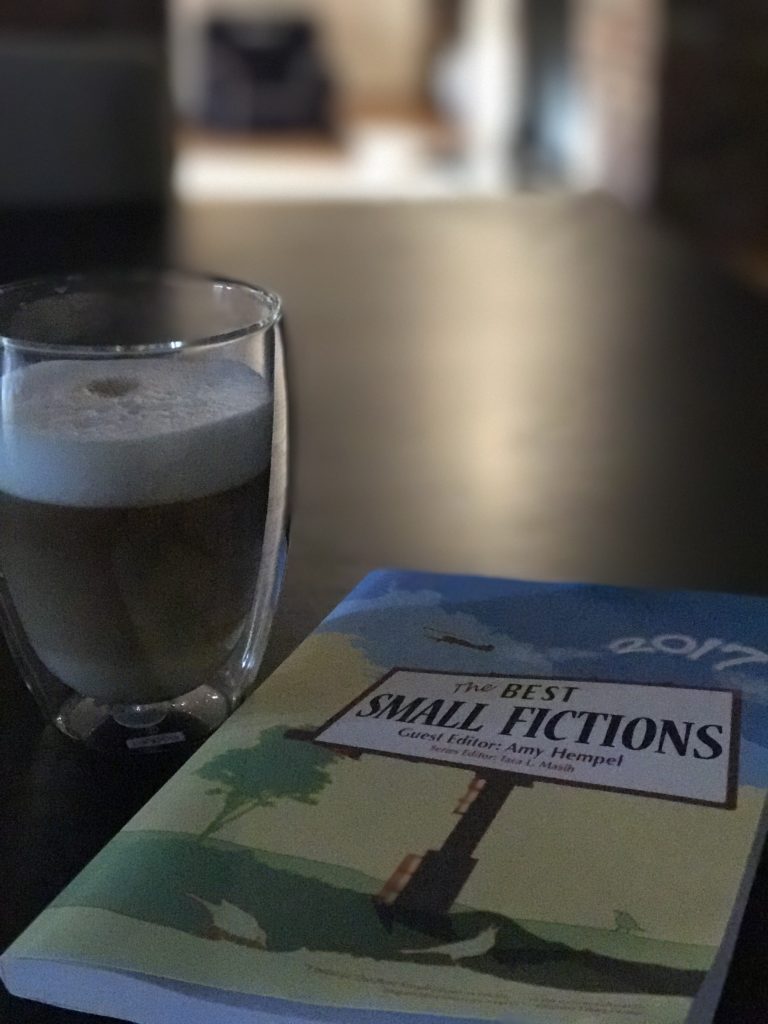Putting out my fourth annual reading list means that it’s officially a site tradition. That same year I also started really using Audible, which has been life-changing (no exaggeration) for the commute and chores like laundry. Their current signup promotion is two free audiobooks, which is awesome.
- No Country for Old Men by Cormac McCarthy
- From Medicine to Mogul by Dr. Draion M. Burch (truly as bad as it sounds)
- The Good Creative by Paul Jarvis
- Ninety-Nine Stories of God by Joy Williams
- Radical Acceptance by Tara Brach (would be a better blog post)
- Get Smart by Brian Tracy
- The Power of Habit by Charles Duhigg
- The Life-Changing Magic of Not Giving a F*ck by Sarah Knight (fun premise wears out gradually)
- Chaos Monkeys by Antonio Garcia Martinez (funny, scathing view of silicon valley; great audiobook)
- Gateway by Frederik Pohl (awesome classic; swept every SF award back in 1978)
- The One Thing by Gary Keller (big bestseller but really a great one-liner that completely falls apart. Summary? Focus on one thing to get better results)
- The Best Small Fictions 2015 (one of the Nanoism stories I published and subsequently nominated made it into this anthology, which was awesome)
- Fantastic Beasts and Where to Find Them by J. K. Rowling
- Perfect State by Brandon Sanderson
- Algorithms to Live By by Brian Christian and Tom Griffiths
- Deep Work by Cal Newport (literally one of the only self-help books I think is actually really worth reading. Newport is a CS professor and just gets it.)
- How to Create a Mind by Ray Kurzweil
- Physicians: Money for Life by Dennis Postema (so bad)
- Spark Joy by Marie Kondo (you might be better off re-reading the original)
- Norse Mythology by Neil Gaiman (The only decent treatment of the Norse canon outside of Marvel comics?)
- Neverwhere by Neil Gaiman
- Spaceman by Mike Massimino (the audiobook is narrated by the author; being in space sounds fascinating)
- When the Air Hits Your Brain by Frank T. Vertosick Jr.
- On Writing by Stephen King
- Anansi Boys by Neil Gaiman
- Elon Musk by Ashlee Vance
- The Great Courses: Money Managing Skills by Michael Finke
- Smoke Gets in Your Eyes by Caitlin Doughty (about the mortuary business, odd stuff)
- Rising Sun by Michael Crichton
- Alcatraz versus the Evil Librarians by Brandon Sanderson
- The Coaching Habit by Michael Bungay Stanier
- Getting Started in Consulting by Alan Weiss
- Till We Have Faces by C. S. Lewis
- Steal Like an Artist by Austin Kleon
- Starman Jones by Robert A. Heinlein (this was what YA looked like in 1953)
- Texts from Jane Eyre by Mallory Ortberg
- Option B by Sheryl Sandberg and Adam Grant (I thought this was an important read)
- Armada by Ernest Cline (fun—not as good as Ready Player One, but you could tell that going in. Wil Wheaton does a great narration on both)
- A Gathering of Shadows by V.E. Schwab (Shades of Magic #2)
- A Conjuring of Light by V.E. Schwab (Shades of Magic #3—great trilogy)
- The Left Hand of Darkness by Ursula K. Le Guin (best speculative fiction writer of all time?)
- The Five Love Languages by Gary Chapman (obvious insights that yet no one implements effectively in their lives)
- Why Not Me? By Mindy Kaling
- The Subtle Art of Not Giving a F*ck by Mark Manson
- The Doctors Guide to Eliminating Debt by Cory S. Fawcett
- The 7 Habits of Highly Effective People by Stephen R. Covey
- 10% Happier by Dan Harris (makes you want to do a 10-day vipassana meditation retreat)
- White Sand by Brandon Sanderson
- The Doctors Guide to Starting Your Practice Right by Cory S. Fawcett
- Stephen Colbert’s Tek Jansen by people other than Stephen Colbert
- Thinking, Fast and Slow by Daniel Kahneman
- Practice Perfect by Erica Woolway, Doug Lemov, and Katie Yezzi
- The Achievement Habit by Bernard Roth
- Nimona by Noelle Stevenson (graphic novel and national book award finalist)
- Off to Be the Wizard by Scott Meyer
- The Geography of Genius by Eric Weiner
- Things Might Go Terribly, Horribly Wrong by Troy DuFrene and Kelly G. Wilson
- I Will Teach You to Be Rich by Ramit Sethi
- Rest by Alex Soojung-Kim Pang
- The Lightning Thief by Rick Riordan
- The Collapsing Empire by John Scalzi
- Goodbye, Things by Eriko Sugita
- Barbarian Lord by Matt Smith
- Pilot X by Tom Merritt
- Astrophysics for People in a Hurry by Neil deGrasse Tyson
- Artemis by Andy Weir (fun—not as good as The Martian, but you could tell that going in. On the plus side, the audiobook is narrated by Rosario Dawson)
- Scythe by Neal Shusterman
- Rendezvous with Rama by Arthur C Clark (won the Hugo and Nebula back in 1973; I read this as a kid but it almost felt new again)
- On Power by Robert Caro
- The Fountains of Paradise by Arthur C Clark (the space elevator! won the Hugo and Nebula back in 1979)
- The Doctors Guide to Smart Career Alternatives and Retirement by Cory S. Fawcett
- Ubik by Philip K Dick (Do Android’s Dream of Electic Sheep [i.e. Bladerunner] may be Dick’s least weird book. Ubik is definitely not—it’s very very odd.)
- Holidays on Ice by David Sedaris
- The Mongrel Mage by L. E. Modesitt Jr. (I have a soft spot for the Recluce series and its magic of order and chaos since I started reading them as a kid. That said, his editor needs a much heavier hand. If you could Find+Replace every instance of the word “sardonic” out of the book it would instantly be pages shorter.)
- The Daily Stoic by Ryan Holiday (one translated passage of ancient stoic philosophy per day for a year)
The only classics I read this year where classic SF novels from the 70s. Oops.
As a doctor who writes, I try to read most of the books written by docs for other docs. I think I’m going to stop soon.
As research for the site and my second book, I’ve also now read pretty much every book on “physician finance.” These are mostly terrible, and I hope I’m mostly done with that subgenre forever.
The self-improvement/lifestyle stuff is also mostly background for some future site writing and as a genre is really fluffy. Of the lot, Deep Work by Cal Newport was definitely my recent favorite. Even then, one of the issues with literally everything ever published in this vein is that the vast majority of it can not/does not apply to doctors (at least outside of those with substantial academic time) or anyone who is forced to bill time for money instead of creating an outcome, product, or other deliverable. Every book is really talking to creative professionals, “entrepreneurs,” and cubicle drones.
My copy of Brandon Sanderson’s Oathbringer just arrived, so that’s going to need to happen early in 2018 for sure.

